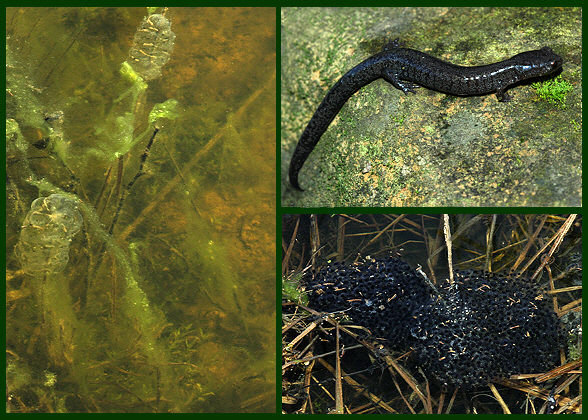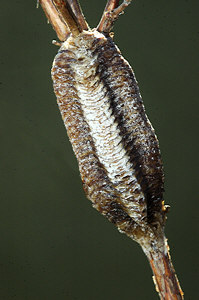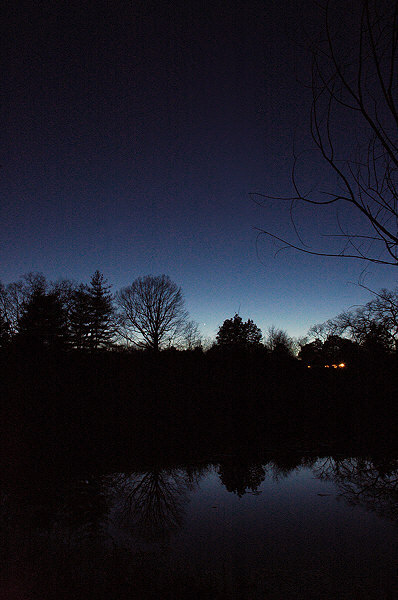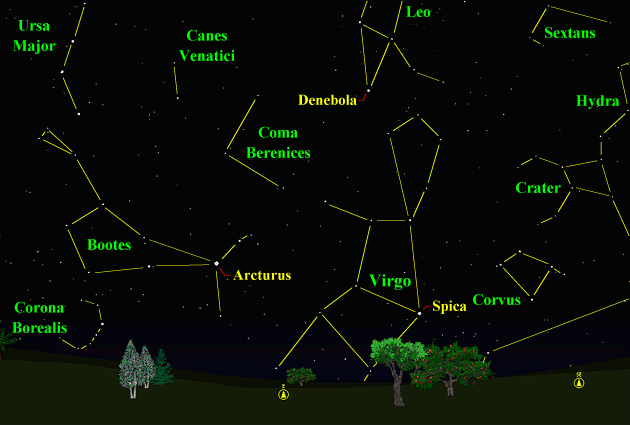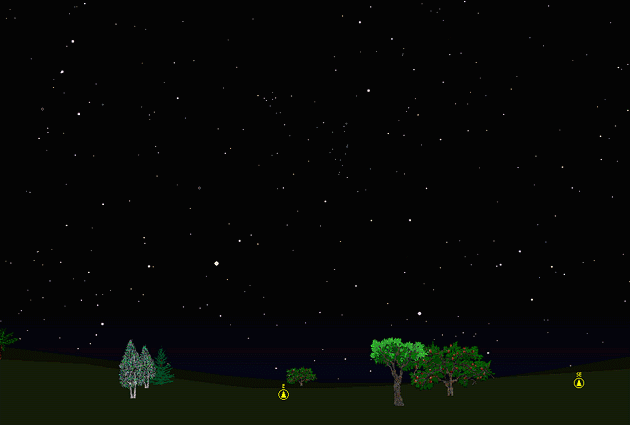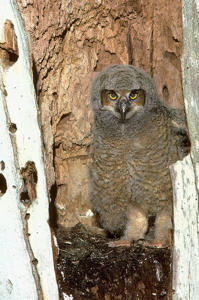The purpose of this feature is to give scout leaders, educators and naturalists an idea of some of the natural events coming up each month. We will try to cover a variety of natural events ranging from sky events to calling periods of amphibians, bird and mammal watching tips, prominent wildflowers and anything else that comes to mind. We will also note prominent constellations appearing over the eastern horizon at mid-evening each month for our area for those who would like to learn the constellations. If you have suggestions for other types of natural information you would like to see added to this calendar, let us know! Note: You can click on the hyperlinks to learn more about some of the featured items. To return to the Calendar, hit the "back" button on your browser, NOT the "back" button on the web page. All charts are available in a "printer friendly" mode, with black stars on a white background. Left clicking on each chart will take you to a printable black and white image. News Flash! New Binocular Comet in Dawn Sky - See Below in Sky Events for March 2006. Notes and Images From February 2006
A walk around our pond on February 26th revealed both Tiger Salamander and Southern Leopard Frog egg masses. The Tiger Salamander egg masses were just beneath the surface of the water and were attached to stalks of vegetation. They are about an inch and a half in diameter and vary in length.
We were not surprised to find the Southern Leopard Frog egg masses, as the warm temperatures early in the month precipitated a burst of calling activity on February 17th. That night, the early evening temperature was an amazing 67 degrees Fahrenheit! On our Tennessee Amphibian Monitoring Program route the same evening we observed Southeastern Chorus Frogs, Spring Peepers and American Toads. Continuing our walk around the pond on the 26th, we found six dark-phase Zigzag Salamanders beneath some debris. Late February and March seem to be a good time to find these salamanders. The bright coral fruit of the Coralberry added a touch of color to the field, and we found the Praying Mantis egg case shown on the right attached to the stem of a Coralberry near the pond's edge.
As dusk fell, Southeastern Chorus Frogs and Southern Leopard Frogs began calling from our pond. I took advantage of the clear skies to look for the planet Mercury. Because of the steep angle of the ecliptic with the horizon at sunset in March, this time of year gives favorable viewing opportunities for Mercury in the western sky. Mercury reached its greatest elongation from the sun on February 23rd, three days before. I spotted the innermost planet about 40 minutes after sunset. The great astronomer Nicholas Copernicus once said that he, to his intense regret, had never succeeded in observing Mercury.[1] It's always satisfying to pick out the tiny point of light in the twilight glow and follow it down to the horizon. Several wood ducks flew over as the sky darkened, and by the time I made my way back to the house the brilliant stars of Orion and Canis Major were already sparkling in the south.
Sky Events for March 2006: New Comet in Dawn Sky! Comet Pojmanski, discovered on January 2nd, 2006, should be visible in binoculars in the dawn sky during the first half of March. To read about the comet, and to view a printable finder chart, go to the Sky and Telescope page at: http://skyandtelescope.com/printable/observing/objects/comets/article_1687.asp Spring officially begins on March 20th at 12:26pm CST , the time of the Spring Equinox. Unofficially, it seems to have begun much sooner than that this year! Evening Sky: Saturn is in terrific position for viewing this month, and is about 45 degrees above the eastern horizon at midmonth at dusk. Look for it below the bright stars Castor and Pollux in Gemini. This is a great time to view this magnificent planet and most small telescopes will deliver a stunning view. Mars continues to fade in the western sky. Look for it near Taurus. Jupiter clears the eastern horizon a little after 10:00pm CST on the 15th. Morning Sky: Venus dazzles those early risers who view the eastern sky before dawn. At midmonth the goddess of beauty rises around 3:40am. All times noted in the Sky Events are for Franklin, Tennessee and are Central Standard Time. These times should be pretty close anywhere in the mid-state area.
Constellations: The views below show the sky looking east at 9:30pm CST on March 8th. The first view shows the sky with the constellation outlines and names depicted. Star and planet names are in yellow. Constellation names are in green. The second view shows the same scene without labels. The bright star Arcturus, in Bootes, the Herdsman, makes its appearance this month in the early evening sky, a sure sign that Spring is here. Below Bootes is Corona Borealis, the Northern Crown. In the southeast, Virgo clears the horizon this month along with Corvus, the Crow. To download each chart in a format that will not drain your printer of black ink, simply click on each chart.
On Learning the Constellations: We advise learning a few constellations each month, and then following them through the seasons. Once you associate a particular constellation coming over the eastern horizon at a certain time of year, you may start thinking about it like an old friend, looking forward to its arrival each season. The stars in the evening scene above, for instance, will always be in the same place relative to the horizon at the same time and date each March. Of course, the planets do move slowly through the constellations, but with practice you will learn to identify them from their appearance. In particular, learn the brightest stars (Like Arcturus and Denebola in the above scene looking east), for they will guide you to the fainter stars. Once you can locate the more prominent constellations, you can "branch out" to other constellations around them. It may take you a little while to get a sense of scale, to translate what you see on the computer screen or what you see on the page of a book to what you see in the sky. Look for patterns, like the stars of the "Big Dipper." The earth's rotation causes the constellations to appear to move across the sky just as the sun and the moon appear to do. If you go outside earlier than the time shown on the charts, the constellations will be lower to the eastern horizon. If you observe later, they will have climbed higher. As each season progresses, the earth's motion around the sun causes the constellations to appear a little farther towards the west each night for any given time of night. If you want to see where the constellations in the above figures will be on April 8th at 9:30pm CST, you can stay up till 11:30pm CST on the March 8th and get a preview. The westward motion of the constellations is equivalent to two hours per month. A good book to learn the constellations is H. A. Rey's classic, The Stars, A New Way to See Them. Rey's depictions of the constellations and witty commentary are terrific. A good general reference book on astronomy is the Peterson Field Guide, A Field Guide to the Stars and Planets, by Pasachoff. The book retails for around $14.00. A good beginners software program for learning the night sky is the Starry Night Beginner program. Visit the Starry Night web site at www.starrynight.com The program retails for around $30.00 and contains a wealth of information.
Circumzenithal Arcs: Fall, Winter and Spring are good times to watch for these beautiful arcs that form directly overhead. Be sure to look upward in the late afternoon anytime you have wispy cirrus clouds in sky.
Amphibians:
With the unusually warm January and February temperatures this year, some species are calling earlier than we normally hear them. Southern Leopard Frogs were already calling and breeding by mid-February. Southeastern Chorus Frogs and Spring Peepers also began calling in February. American Toads, if you have not heard them yet, should be calling soon. Look for their eggs, and for the egg masses of Wood Frogs, Spotted Salamanders and Tiger Salamanders. In West Tennessee, Northern Crawfish Frogs give their loud snoring calls in early March. At higher elevations, listen for Mountain Chorus Frogs. Towards the end of the month listen for Pickerel Frogs doing their "yeeooow" call. Remember that on mild nights you may find frogs and toads out foraging that you do not hear until later in the season, and the record-breaking temperatures we have been having may yield some very interesting early records. Listen for early treefrogs, like Cope's Gray Treefrog.
Birds:
This time of year is prime time to find owl nests. Since the leaves have not yet appeared on most trees, you can sometimes spot the old stick nests that the owls often use for nesting. Observe only at a distance and do not try to approach a nest, both for your own safety and to keep from flushing the owl off the eggs. The adult's absence, if it flushes, can allow the eggs to rapidly get too cold, and may doom the nest. Look and listen for the young Great Horned Owls. If you find a young owl on the ground, leave it there! Its parents will feed it on the ground. Well-meaning people sometimes take young owls they find on the ground to wildlife rehabilitation centers, thinking the young owls have been abandoned. This is not necessary, and it may prevent the owl from ever successfully living in the wild. Don't do it.
Recommended: Bird Finding in Tennessee, Michael Lee Bierly. A classic guide to finding birds in Tennessee. The Sibley Guide to Birds, David Allen Sibley The Sibley Guide to Birds of Eastern North America, David Allen Sibley This new Sibley Guide covers only eastern North America, is quite compact, and is less expensive than the larger Sibley. An inexpensive guide for beginners is the Golden Guide for Birds.
Archives (Remember to use the back button on your browser, NOT the back button on the web page!) Natural Calendar February 2006
Natural Calendar
December 2005
Natural Calendar
November 2005
Natural Calendar
September 2005
Natural Calendar
February 2005
Natural Calendar
December 2004
Natural Calendar
November 2004
Natural Calendar
September 2004
Natural Calendar
February 2004
Natural Calendar
December 2003
Natural Calendar
November 2003
Natural Calendar
September 2003 Natural Calendar February 2003 Natural Calendar December 2002 Natural Calendar November 2002 Nature Notes Archives: Nature Notes was a page we published in 2001 and 2002 containing our observations about everything from the northern lights display of November 2001 to frog and salamander egg masses. Night scenes prepared with Starry Night Pro software All images and recordings © 2006 Leaps
|
